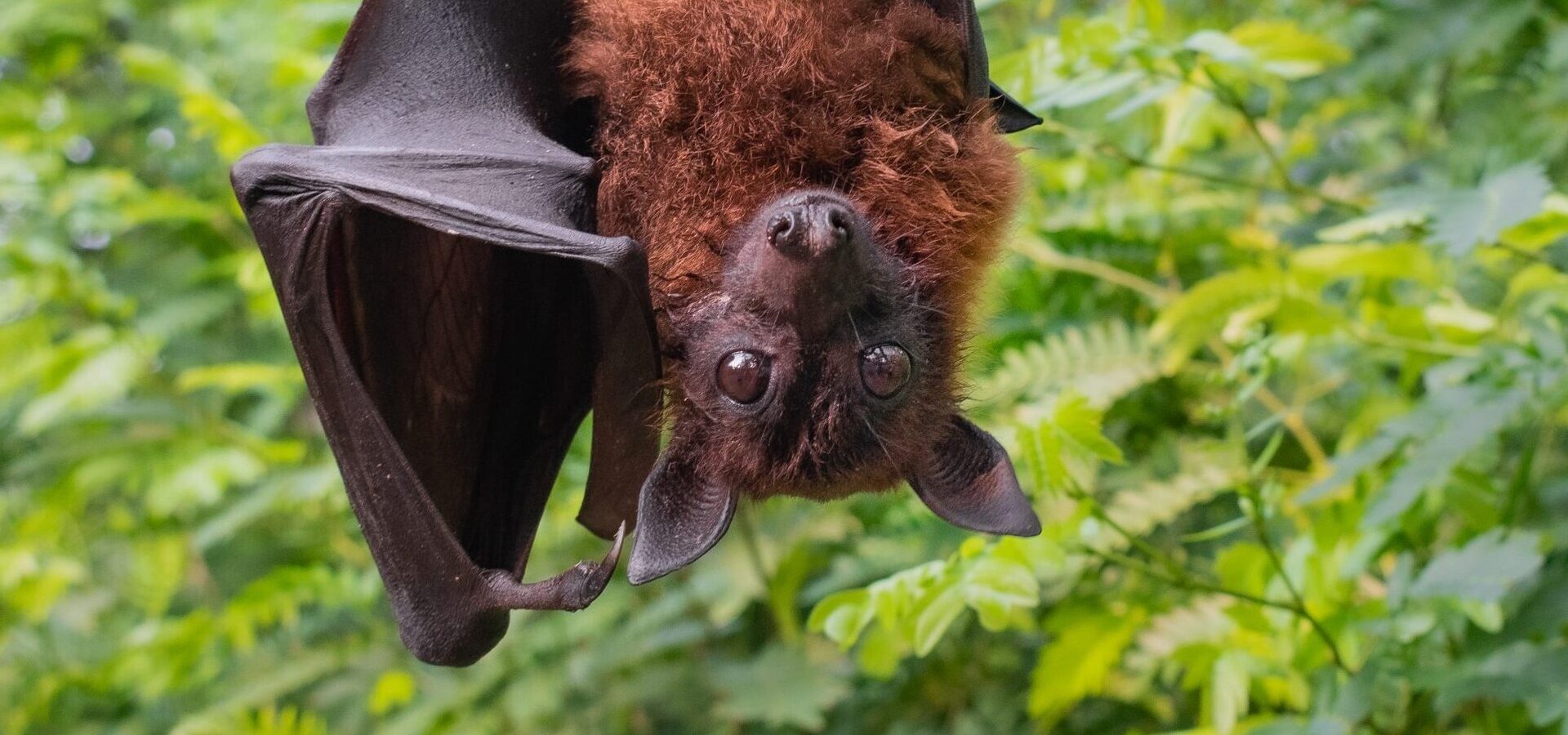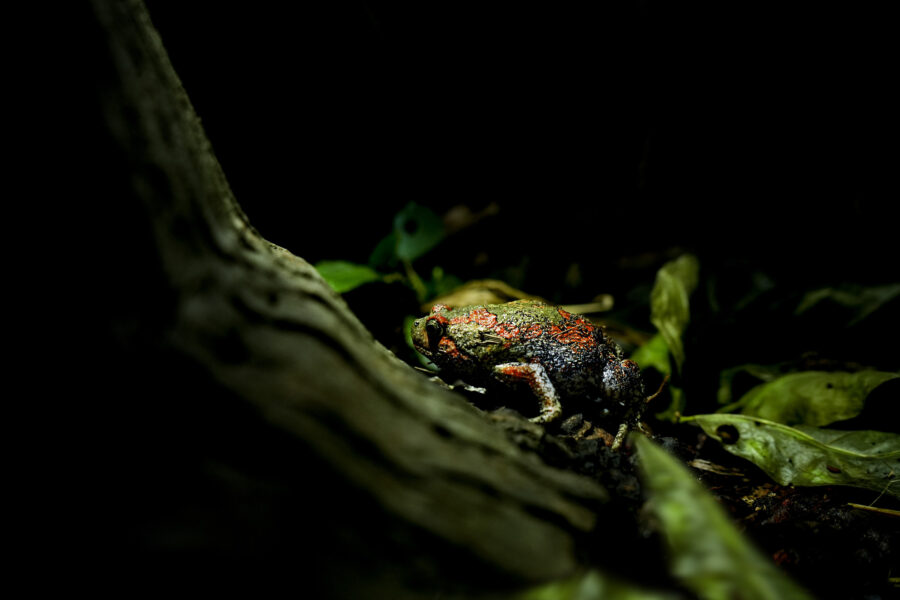Bats are amazing animals, found all over the world with the exception of Antarctica. Often misunderstood and shrouded by myths, these nocturnal creatures play indispensable roles in our ecosystem. They are the only mammals that can truly fly! They are highly intelligent with complex social behaviours, vocal calls, and even have a long-term memory.
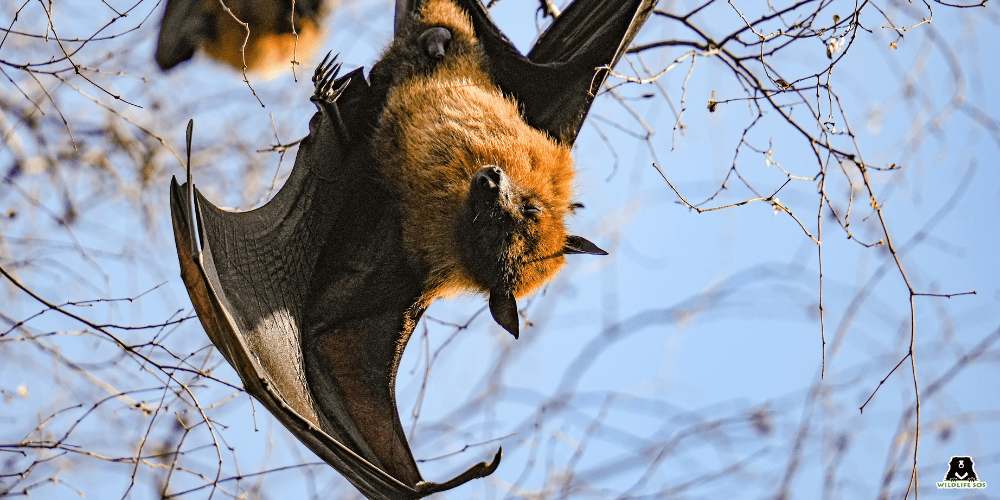
- India is home to 128 bat species, of which the flying fox has a wingspan of nearly 5 feet! [Photo © Wildlife SOS/Suryoday Singh Mann]
Bats belong to the order Chiroptera, which is subdivided into the frugivorous bats (Megachiropterans) and the insectivorous bats (Microchiropterans). They use echolocation as a primary method of navigation and predation. When they’re not flying, these mammals either hang upside down in caves, abandoned buildings, rock crevices and trees, or may choose to stick to wall surfaces. According to the Zoological Survey of India, our country is currently home to around 135 different species of bats, of which the smallest is the Indian pygmy bat and the largest is the Indian flying fox.
For this year’s Bat Appreciation Day on April 17, let us get to know more about the bats found in India!
Bat Families of India
Did you know that as many as 9 families of bats exist in India? Here they are:
- Pteropodidae – Old World fruit bats
The Pteropodidae family comprises a whopping 197 species of bats across the world, 12 of which reside in India. These bats are also known as the flying foxes and are among the largest bats, with wingspan measuring over 5 ft! Their diet comprises fruit, nectar, and pollen, which is why they are also known as fruit bats. The Indian subcontinent houses the Indian flying fox, also known as greater Indian fruit bat. Its widespread presence in our country has been reported from Assam, Gujarat, Himachal Pradesh, Kerala, Madhya Pradesh, Maharashtra, Meghalaya, Tamil Nadu, and Delhi.

- The Indian flying fox is endemic to India, Bangladesh, Maldives, Myanmar, Nepal, Pakistan and Sri Lanka, however in 2024, habitat loss due to human activities have pushed this species’ population into the Nearly Threatened category of IUCN Red List. [Photo © Wildlife SOS/Suryoday Singh Mann]
- Rhinolophidae – Horseshoe bats
Globally, this family consists of a total of 103 insectivorous species of these medium-sized bats. In India, 21 species of horseshoe bats exist in Meghalaya, Himachal Pradesh, Maharashtra, Kerala, Madhya Pradesh, Nagaland, Delhi, Mizoram, Assam, Arunachal Pradesh, Andaman and Nicobar Islands. Every member of this family has a nose leaf, which means that their noses are extended outgrowths shaped in the form of a leaf. The reason behind their common name is that one of the sections of this “leaf” resembles a horseshoe!
- Hipposideridae – Old World leaf-nosed bats
The Hipposideridae family comprises 88 species of insectivorous bats worldwide and in India, 17 species are known to exist. Mostly distributed across Meghalaya, Rajasthan, Himachal Pradesh, Maharashtra, Kerala, Andaman and Nicobar Islands, Karnataka, Andhra Pradesh, Jammu and Kashmir, Madhya Pradesh, Odisha. One specific species known as the Kolar leaf-nosed bat is only found in a cave located in Hanumanahalli village in Karnataka’s Kolar village. Only around 200 of them were reported to have been left in their sole habitat, bringing them under Schedule I of India’s Wildlife (Protection) Act.
- Megadermatidae – False vampire bats
The Megadermatidae family, known as false vampire bats, were first thought to be ‘true’ vampire bats— early naturalists thought they drank blood! In reality, these long nose-leaved, broad-winged bats with large ears are carnivores that feast on insects, frogs, reptiles, birds, and even other bats. Of the six species worldwide, two namely the greater false vampire bats and lesser false vampire bats are found in India. While the former is widespread except in desert and Himalayan regions, the latter is endemic to southern states, Assam, Goa, Maharashtra, Meghalaya, Mizoram, West Bengal and the Andaman & Nicobar Islands.
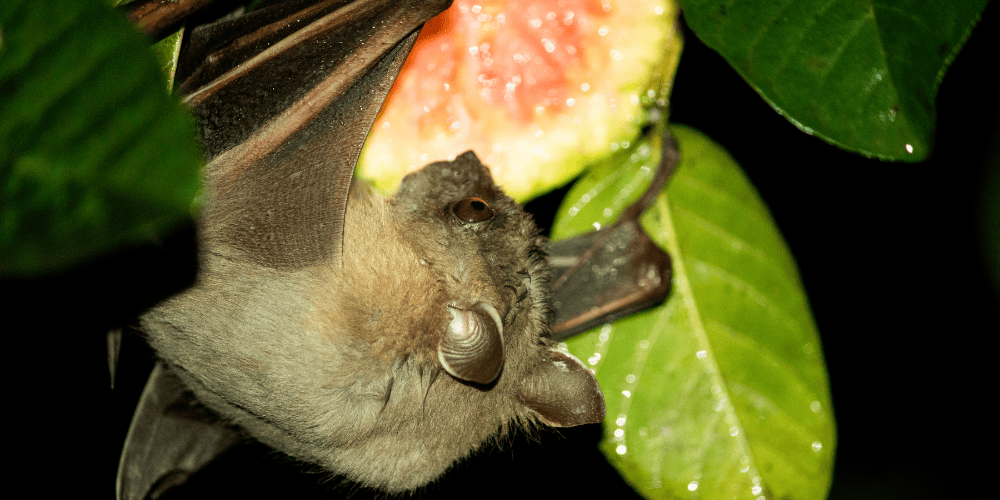
- Fruit bats help disperse seeds and pollinate trees, playing a key role in forest regeneration. [Photo © Canva]
- Rhinopomatidae – Mouse-tailed bats
The Rhinopomatidae family, or mouse-tailed bats, are small to mid-sized insectivorous bats with large ears and a curious feature — an extra-long, thin tail that resembles one attached to a mouse! There are six known species worldwide, and in India, two species are found across Madhya Pradesh, Karnataka, Maharashtra, Andhra Pradesh, Kerala, and Delhi. Apart from their distinct tails, these bats also have a band of skin that connects their large ears to form a forehead!
- Emballonuridae – Sac-winged bats
Emballonuridae, also known as sac-winged or sheath-tailed bats, are a family of small bats with a fascinating feature they use to communicate — they have wing sacs that release pheromones! These chemical signals are vital for social bonding, attracting mates, and marking territories. They are also known as sheath-tailed bats, because their tail appears from a sheath-like membrane on their hind legs. With 54 species worldwide, six species are found in India.
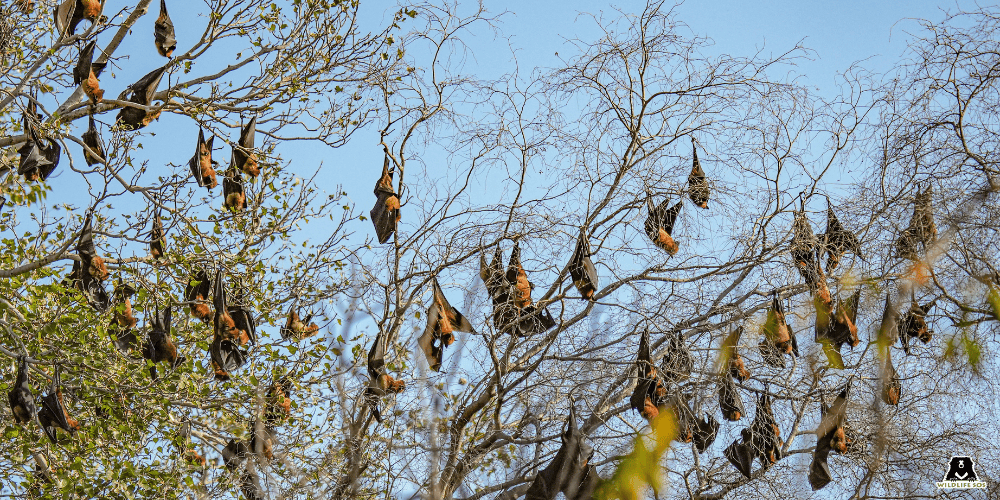
- Some bat species in India form massive colonies for roosting, breeding, staying warm and avoiding predators. [Photo © Wildlife SOS/Suryoday Singh Mann]
- Molossidae – Free-tailed bats
Meet the speedsters of the bat world — the Molossidae! Their long and narrow wings allow these bats to make a swift flight. These insect-hunting fliers have tails that stick out beyond the skin between their wings and tail, earning them their common name. Ranging from small to mid-sized, free-tailed birds have broad snouts, fleshy folded lips, and a quirky trick when they’re on land: they crawl backwards, using their tail like a built-in sensor! As many as 122 species exist in this family, and India is home to four.
- Vespertilionidae – Evening bats
Vesper bats or Vespertilionidae get their charming name from vesper — Latin for “evening star”. They’re the largest bat family on the planet, having as many as 493 insect-loving species! India alone is home to 66 species that have adapted to tropical forests as well as deserts. These birds are known to have small eyes, but they can catch their insect prey between their hind legs with exceptional expertise.
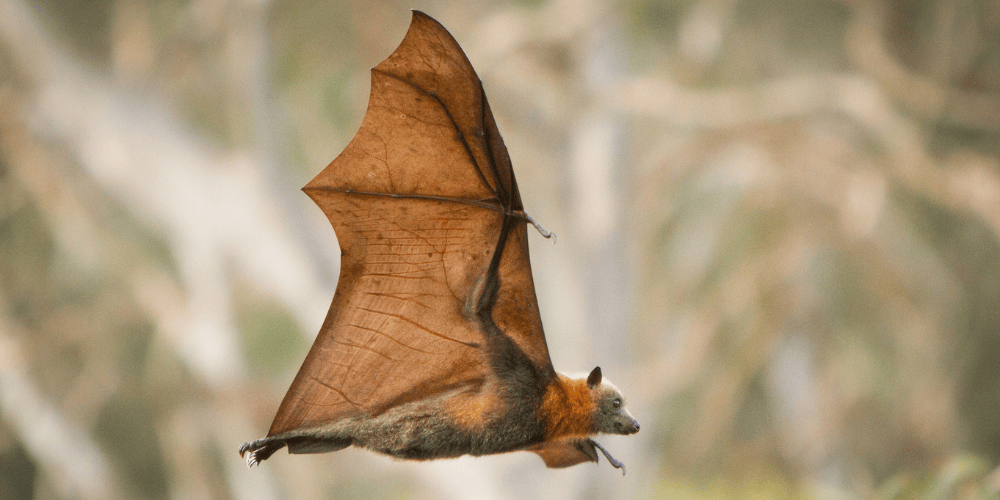
- Bats use echolocation to “see” in the dark—bouncing sound waves to locate insects mid-flight! [Photo © Canva]
- Miniopteridae – Bent-winged bats
The Miniopteridae family members are commonly known as bent-winged bats. They are small insectivorous mammals with wings over twice the length of the body. The worldwide record suggests that there are 36 species of bent-winged bats, of which five can be found in Indian states. Among them is the Asian long-fingered bat that is endemic to Japan, but finds itself across Arunachal Pradesh, Karnataka, Maharashtra, Himachal Pradesh, Uttarakhand and West Bengal.

- Diversity of bat families in India — A glance at the taxonomic richness recorded across species and genera. [Photo © Wildlife SOS/Harsh Vardhan]
Bats are Important, but are Threatened
Bats are essential to preserving the health of the ecosystem — some are crucial pollinators, and most control the insect population. Their intake also keeps a check on pests that lessens the need for dangerous pesticides. Bats also function as environmental health indicators because shifts in their numbers may be symptoms of ecosystem problems. Bats therefore are important and protecting them can preserve habitats that support life on Earth.
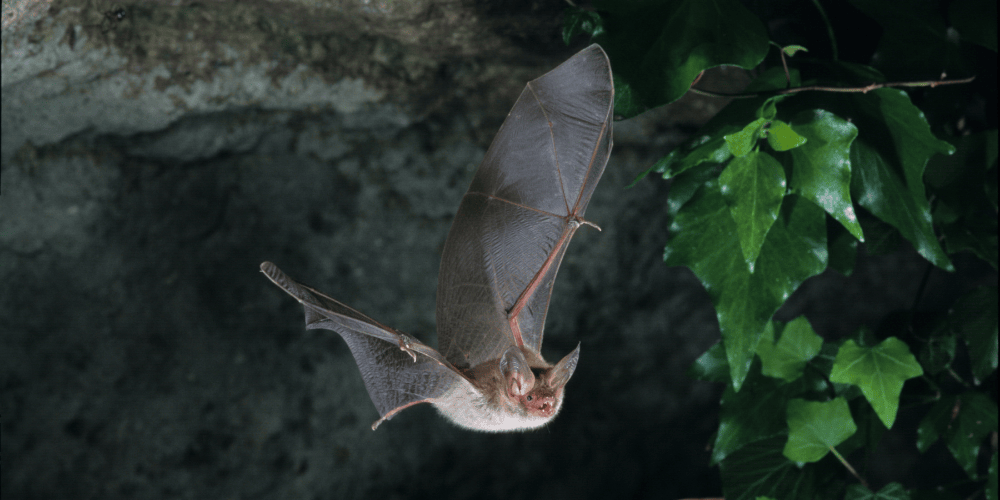
Just one bat can eat thousands of mosquitoes in a single hour, making them vital for pest control in farms and cities alike. [Photo © Canva]
A wide range of threats haunt bats — habitat destruction, and as we can recall from recent events, persecution due to emergent diseases. The former is a result of rampant deforestation, urbanization, and agricultural encroachment which leads to several bats losing their roosting areas and prey. Further, active power lines installed electrocute bats, resulting in fatality.
Bats are also perceived negatively due to the many superstitions and misinformation that surround it in India. On Bat Appreciation Day 2025, let’s make ourselves aware of the real ‘dark knights’ — bats are not something to fear, but rather beneficial partners in maintaining ecological harmony. And so, the next time you see a bat silhouette against the night sky, take a moment to appreciate the important role it has in the delicate web of life.
To know more about the wondrous ways of wildlife, do subscribe to Wildlife SOS’s monthly newsletter.
Feature image: Kunal Malhotra / Wildlife SOS

